1. DIY Loft Bed Crash

In 2020, a full-time RVer added a second sleeping area by installing a homemade loft bed above the cab of their Class C. They shared the hack on YouTube, promoting it as a space-saver for families. But the platform wasn’t bolted into the structural frame—just the interior paneling. On a mountain road in Colorado, the entire bed collapsed during a sharp turn, injuring two kids.
RV interiors aren’t built to support heavy modifications unless anchored to frame points. While creative, this hack ignored basic weight distribution and safety engineering. It also blocked the emergency egress window, which made rescue harder. Structural changes should always involve a professional.
2. Solar Panels That Caught Fire
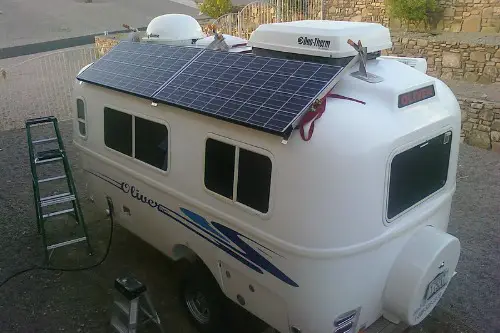
In 2022, a couple traveling through Arizona installed DIY solar panels to save on hookup fees. They used low-cost connectors from an online seller and didn’t fuse the system properly. One wire overheated while they were driving through the desert, sparking a fire that spread through the roof. Their RV was engulfed in flames within minutes, and they barely escaped with their dogs.
Solar power is great for boondocking, but poor wiring and lack of circuit protection are dangerous. Certified solar installations follow strict voltage and amperage rules—ignoring those is a gamble. Experts warn against using cheap extension cords or skipping fuses, especially in high-heat regions. This fire was preventable with proper electrical planning and equipment.
3. Overloaded Rooftop Storage Collapse

In Oregon, a family used a rooftop cargo carrier to hold heavy items like folding chairs, canned goods, and extra water jugs. They were copying a TikTok trend about maximizing space using a roof box. While driving down I-5, the overloaded carrier ripped from its mounts, crashing into a car behind them. No one was seriously hurt, but the RV’s roof was severely damaged and the trailing vehicle needed a new windshield.
Rooftop storage has limits—and most RVs aren’t designed to carry hundreds of pounds up top. The extra weight also shifts the center of gravity, making rollover accidents more likely. Always check your RV’s roof load rating and the specs on your carrier. Just because it fits doesn’t mean it’s safe.
4. Towing a Sedan With a Bungee Hack
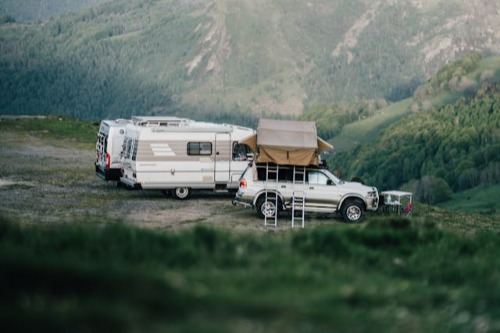
An RVer in Texas went viral for towing their compact car using a “budget tow system” involving ratchet straps and bungee cords instead of a proper tow bar. They made the video as a joke but actually used the setup on a short trip. On the highway, one strap snapped, sending the towed car fishtailing into traffic. Multiple vehicles were hit before it came to a stop.
Tow bars exist for a reason, and they’re designed to handle dynamic tension and weight transfer. Improvised towing can result in total loss—not just of the towed vehicle, but others around you. Most states require approved equipment and safety chains. This stunt easily could’ve turned fatal.
5. Generator Exhaust Hack Led to CO Poisoning

To reduce generator noise and smell, an RV couple in Florida rerouted their generator exhaust using flexible dryer vent tubing. They intended to direct fumes away from their boondocking spot. But the makeshift tubing leaked, and carbon monoxide seeped into the RV overnight. The couple was found unconscious the next morning—one had to be hospitalized for CO poisoning.
Generator fumes are deadly, and hacks that redirect exhaust can backfire horribly. Manufacturer-approved exhaust extensions exist for a reason and are tested for leaks. CO detectors are vital, but placement matters too. Anything involving combustion requires zero shortcuts.
6. Leveling With Bricks Turned Disaster

At a campground in North Carolina, an RVer forgot their leveling blocks and used loose bricks they found nearby. The bricks crumbled under the RV’s weight while they were inside sleeping. The trailer shifted suddenly, snapping off a stabilizer jack and damaging the frame. It took a crane and several hours to reposition it safely.
Bricks and rocks aren’t substitutes for engineered leveling blocks. Uneven or improvised surfaces can shift or crack, especially under heat and weight. RV leveling systems distribute load evenly, while bricks offer zero compression control. This hack ended up costing more than just a set of blocks.
7. Cooking With an Outdoor Crockpot Setup

Trying to avoid indoor heat, one RVer rigged up a slow cooker outside using a power inverter wired directly to their RV battery bank. The idea was to have dinner ready without heating up the inside. However, the wiring wasn’t rated for the current draw, and the inverter overheated. The fire destroyed the inverter bay and half the kitchen before firefighters contained it.
Crockpots are low-wattage—but not low enough to bypass electrical standards. Inverters need proper ventilation and cable sizing to avoid thermal overload. Just because an appliance works at home doesn’t mean it’s RV-safe. This hack ignored some serious power management rules.
8. Homemade Washer/Dryer Tipped Over
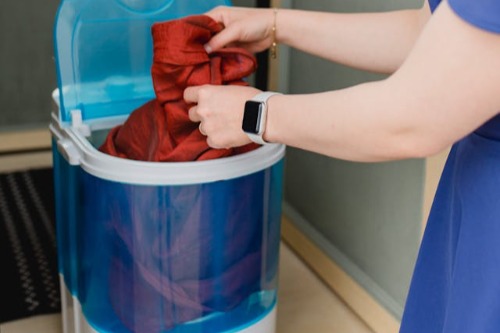
A couple on social media built their own compact laundry setup using a mini washer and a ventless dryer in their toy hauler. They bolted it to a plywood platform but skipped anchoring it to the frame. On a bumpy section of California’s Highway 395, the whole unit toppled during transit, smashing a slide-out wall and damaging the plumbing underneath. The cost to repair? Over $5,000.
Heavy appliances require reinforced support, especially in mobile environments. Even if something fits, it’s critical to factor in movement, vibration, and stopping force. DIY setups are tempting, but safety should always come first. This was one shortcut that wrecked an entire trip—and a budget.
9. “Tire Pressure Hack” With Mismatched PSI
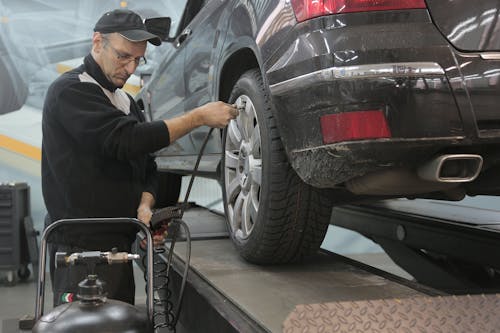
A trend on an RV forum suggested deflating trailer tires slightly for a smoother ride. One user tried it on their fifth-wheel during a trip across Utah, lowering pressure by 10 PSI below the manufacturer’s rating. Hours later, a tire blew out at highway speed, causing the trailer to swerve and slam into a guardrail. The tire failure also damaged the wheel well and wiring.
Tire pressure isn’t just about comfort—it’s about load safety and heat dissipation. Underinflated tires flex more and get hotter, increasing blowout risk. Manufacturer specs exist for a reason, especially for heavy trailers. The “soft ride” hack turned into a hard lesson.
10. Makeshift Shower Drain Freezing
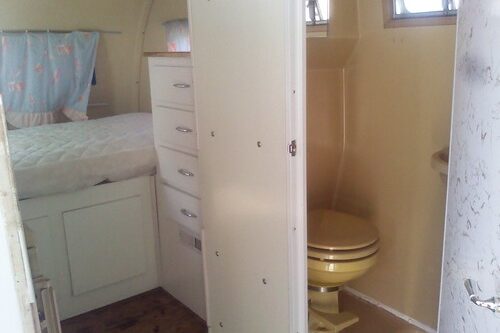
To winter camp in Colorado, a couple rigged their RV shower to drain into an exterior gray water tote using a garden hose. The hose wasn’t insulated, and it froze solid overnight. As a result, water backed up into the RV and flooded the bathroom. The frozen hose also cracked, dumping waste water under the trailer.
Winter hacks need insulation and proper drainage slopes. Makeshift hose drains can work short-term—but not in freezing conditions. RV plumbing is fragile, and freezing can split lines and fixtures. A heated hose or internal drain would’ve avoided this icy mess.
11. Reflectix Window Covers Causing Overheating
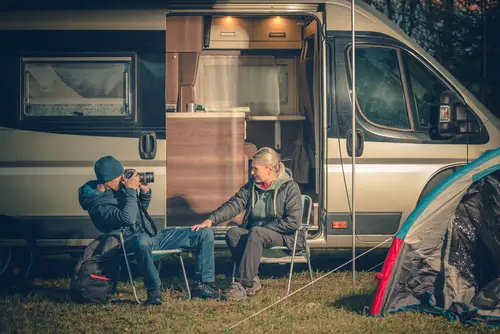
One RVer used Reflectix insulation in every window, trying to keep their rig cool in Texas heat. The silver-sided material trapped heat between the glass and the film instead of reflecting it outward. After hours in direct sunlight, the windows cracked due to thermal stress. The RV’s internal temperature also soared, making it worse than before.
Reflectix works best when installed with an air gap, not pressed directly onto glass. Misusing it turns windows into solar ovens. Good insulation helps—but ventilation and shade are key. This hack cooked the RV from the inside out.
12. Campfire Hack With Sterno Cans Gone Wrong
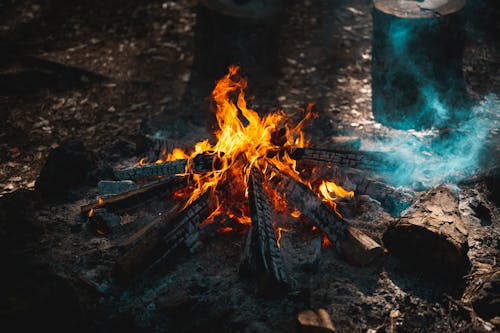
To avoid collecting firewood, a traveler used several Sterno cans in a ring of rocks to mimic a campfire. They were trying to stay warm during a chilly night in Idaho. One of the cans tipped and ignited a nearby propane line that wasn’t properly capped. The resulting fireball scorched the RV’s side and melted a power cord.
Sterno is meant for controlled, tabletop use—not open firepits or heating hacks. Combining open flame with fuel lines is a recipe for disaster. RVs have propane lines running under and along their bodies—any nearby flame is a risk. This attempt at convenience nearly turned catastrophic.
This post 12 RV Accidents That Happened Because of Popular Travel Hacks was first published on Greenhouse Black.
